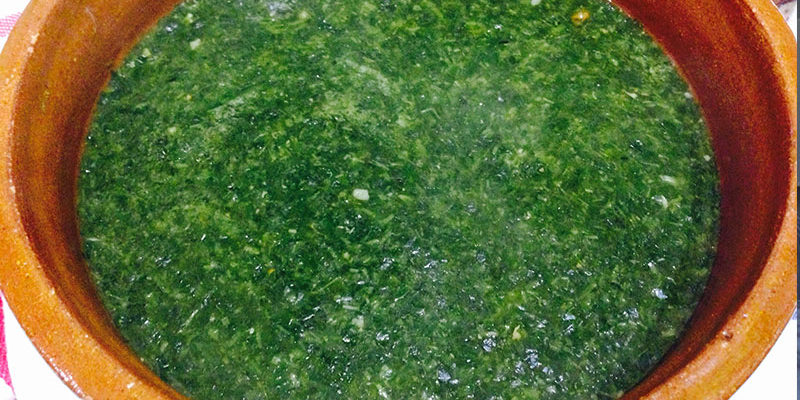Molokheya, a staple in Egyptian cuisine, bringing families together for generations. Since my kids love it and eat it without questioning what’s in it, I sneak in non-molokheya related ingredients, that do not alter the taste but come with added benefits.
First let us start with some of the amazing nutritious facts about Molokheya that will make you enjoy it more. The most prominent nutritional components of Molokheya include fiber, potassium, iron, calcium, magnesium, phosphorous, and selenium, as well as vitamin C, E, K, B6, A, and niacin. It also contains antioxidant elements, making a well-rounded and highly beneficial addition to your diet.
These nutrients make it beneficial for heart health and circulation, regulation of digestion, boosting immunity, building strong bones, improving blood pressure, improving sleep, reducing inflammation and enhancing growth and development. Minerals and vitamins are required in the formation of new cells, especially Magnesium. The very high level of magnesium in molokheya makes it a favorite for parents wanting to ensure proper growth and development of their children. It also works to protect adults and speeds up the healing process.
For an additional nutrient blast try this recipe:
I personally make a big batch once a week. We either go with the “cook once, eat twice” rule or simply freeze half of it.
Ingredients:
- 1 Kg finely chopped Molokheya or 2 frozen packs (1 frozen pack = 400 grams).
- Homemade vegetable broth*.
- Your choice of non-molokheya ingredients.
Choose 1-2 per batch of Molokheya:
- Coriander – choose organic, chop and toss in.
- Zucchini – in a separate pan, lightly boil the zucchini, blend and add to mix.
- Kale – blend with some broth then toss into Molokheya once cooked. Kale can be bitter. I recommend you start with small amounts.
- Watercress (Arugula) – same as kale.
- Organic Turmeric – for its powerful anti-inflammatory and antioxidant effects.
Preparation:
- Bring molokheya packs out of freezer from the night before.
- In a large pot, place the molokheya and broth on low heat (do not let it boil).
- Add chopped coriander and the non-molokheya ingredients.
- Add water as necessary.
- Once the molokkheya comes to a boil, I lower the heat, make the tasha, then add it.
- You then stir it all in together.
Adding the ‘Tasha’:
- The garlic, coriander seasoning that gives its famous taste.
- Melt 2 tbsp. of coconut oil in a small frying pan.
- Add 3 crushed garlic cloves and 1 tsp. coriander, stir until golden brown.
- Immediately pour components of skillet onto molokheya pan. Don’t stir. you should hear a “tsshhh” sound!
*How to make vegetable broth:
Ingredients:
- 3 carrots, peeled and cut in half
- 1 medium onion, quartered
- 2 celery stalks, cut in half
- 3 garlic cloves, peeled and smashed
- 2 bay leaves
- freshly ground black pepper or 10 peppercorns
- Small handful parsley sprigs (optional)
Take it up a notch by pairing with brown rice, wild rice, quinoa or a combination and a large salad on the side.
For more ways to integrate healthy ingredients into your meals download my free guide 7 Ways To Integrate Healthy Ingredients Into Your Meals.
This article was published on April 17th, 2015 in Kouhl magazine.

